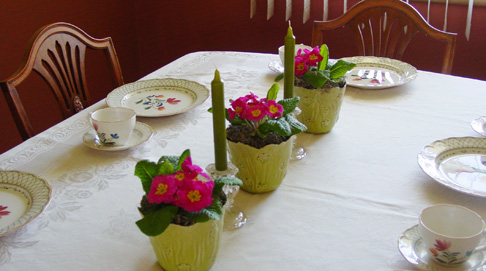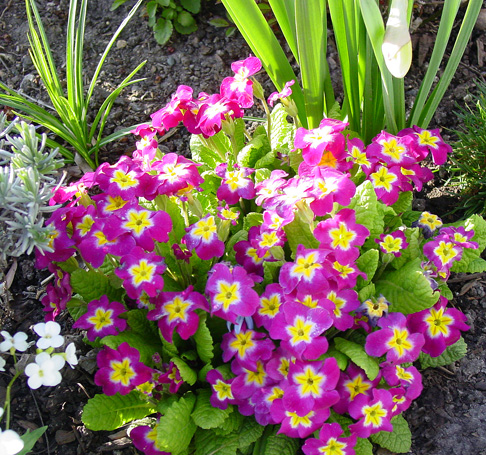In early spring, I often use primroses around the house as decorations, especially for dinner parties. They add such a cheery and colorful spring flair to the table setting and when the event is over, I simply plant them into the garden to join the primrose colony already growing there. We get to enjoy them first as a centerpiece and then later, as a colorful addition to the landscape.
As you know, primroses are early bloomers that come in a variety of size, color and forms. They work well in containers as well as in the garden and are easy to naturalize in your yard if you provide proper growing conditions. They will multiply each year and add vibrant color to your yard. Most available primroses are Polyanthus hybrids and they range in color from white and yellow to orange to pink, red, purple and blue. While commonly seen in spring, primroses can continue blooming throughout the summer if their growing conditions are met.
Primrose Care
These plants woodland perennials and prefer damp conditions that mimic their natural setting. For best results, primroses should be planted in well-drained soil located in partial shade and they appreciate a bit of organic matter added to the garden bed. Plants should be set 6-12 inches apart and 4-6 inches deep. Always water thoroughly after planting and add a layer of mulch to help retain moisture. Continue watering your primroses about once a week throughout the summer but taper off watering in fall. To keep your plants looking their best, trim dead leaves and spent flowers.






So pretty! I love primroses in the spring! I’ve also put them in pretty teacups on a windowsill. Perfect for gray days.
I love them! I started some drumstick primroses a year ago and now I have lots of plants. It will be fun to see them all bloom in a while. Have you noticed that when the greenhouse grown ones are planted in the garden they frequently are not exactly the same color when they bloom.